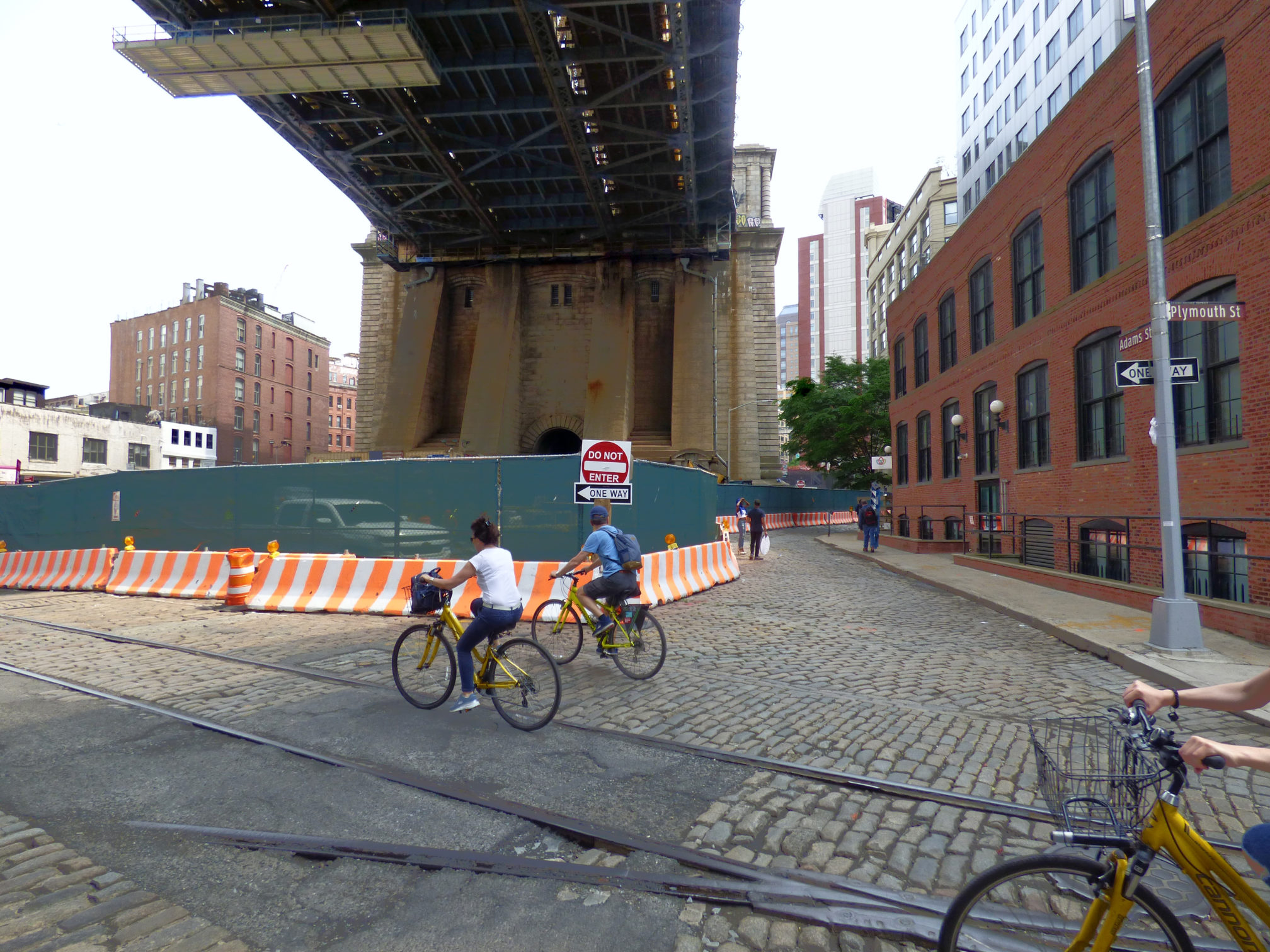All eyes on DUMBO’s historic streets as rehab begins

The DUMBO Neighborhood Alliance is voicing alarm over the future of the neighborhood’s streetscapes as the city starts its second and final phase of a $20 million street, water and sewer renovation plan.
According to the group, more than half of the hand-cut Belgian blocks paving DUMBO’s historic streets — which are not, as they are frequently confused with, cobblestones — have been removed since the picturesque neighborhood received Historic District designation in December 2007.
In theory, that designation protects a district from any demolition or modification that would alter its fundamental historic character. The old-fashioned streets and the Belgian block — identified in the designation report as essential parts of the neighborhood’s identity — have also provided the scenic backdrops for hundreds of films and attracted thousands of tourists.
